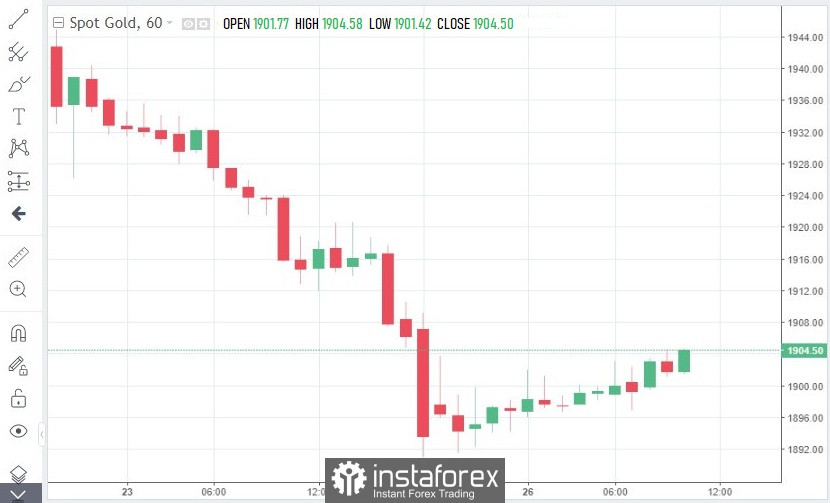
Yesterday, the gold market experienced Black Monday. Bullion lost almost $40 in a day, and this despite the increased coronavirus risks and another sell-off in the stock markets.
The first session this week brought tangible losses to gold. Its quotes dropped by $38.30, or 2% on Monday. The yellow asset has lost almost as much in price over the past seven days.
The precious metal ended yesterday's trading at $1,896. This is the lowest value for two months. The last time gold traded at such a low level was on February 25.

The main culprit of the sharp drop in gold is the US dollar. Yesterday, its index strengthened by 0.5% and reached 101.73.
And the daily high for the greenback was 101.86 points. This is the highest value since March 2020.
Two factors helped the dollar to be on pandemic peaks. First, the hawkish attitude of Federal Reserve officials. Last week, Fed Chairman Jerome Powell said the central bank was preparing to raise rates by half a percentage point at its May meeting.
Secondly, the demand for the US currency has increased due to the situation in China. The ongoing quarantine in the country has again put the global economy at risk.
The threat of a recession has caused another wave of panic in global stock markets. After Friday's sharp sell-off, shares of many companies continued to decline on Monday.
But even in the midst of a bearish securities market, gold could not maintain its appeal. Investors fled from risk to a safer haven. This status is now held by the world reserve currency – the US dollar.
Gold's inability to capitalize on anti-risk sentiment indicates a deterioration in its future prospects. It will be very difficult for bullion to return to growth, given the Fed's interest rate forecast.
Now the markets expect a sharper rise in rates not only in May, but also in June and probably in July. And the Fed Watch CME tool now indicates that by the end of the year the indicator will grow to 3.25%.
In the short term, a series of aggressive rate hikes by the Fed will continue to strengthen the dollar and at the same time real yields.
On Monday, by the way, the yield on US Treasury bonds retreated slightly from the multi-year high of 2.852% reached last week. However, this did not help gold avoid a major fall.
And since there is a little more than a week left before the Fed rate hike by 50 bp, the demand for bullion is likely to weaken even more in the coming days.
So buy or sell gold?
According to analysts, gold still has a long way to go before its long-term upward trend is threatened.
Many experts explain the large sale of bullion by the departure of speculators from the market. After the quotes failed to break above $2,000, disappointed traders began to get rid of gold.
And although bearish sentiment in the precious metal market is growing, there is an opinion that the current pullback can be considered as an excellent opportunity for long-term investment in bullion.
– I don't think now is the time for long-term gold investors to panic. The precious metal will remain in a bullish trend as long as it stays above $1,850. This is the very line in the sand that needs to be closely monitored," strategist Philip Streible shared his opinion.
 English
English 
 Русский
Русский Bahasa Indonesia
Bahasa Indonesia Bahasa Malay
Bahasa Malay ไทย
ไทย Español
Español Deutsch
Deutsch Български
Български Français
Français Tiếng Việt
Tiếng Việt 中文
中文 বাংলা
বাংলা हिन्दी
हिन्दी Čeština
Čeština Українська
Українська Română
Română

